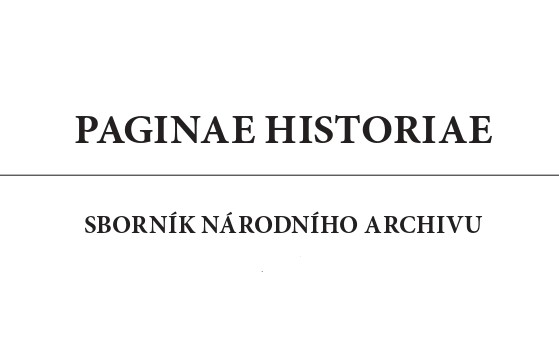Osudy Maltézské knihovny v Praze a její současný stav
The Fortunes of the Maltese Library in Prague and Its Current State
Author(s): Pavel TrnkaSubject(s): Cultural history, Library and Information Science, Social history, Recent History (1900 till today)
Published by: Národní archiv
Keywords: Prague; Maltese Library; fortunes; state;
Summary/Abstract: Th e Maltese library belongs to the most important historical libraries since it contains a considerable amount of books pertaining to the Maltese order (so called melitensia). This was the reason why it attracted attention of several researchers from Friedrich Karl Gottlob Hirsching who gave an overview account of the library at the end of 1780s to Bohumír Lifka, Ira Ropková and Petr Mašek at the latter half of the 20th century. The library manuscripts were studied by Václav Černý and Stanislav Petr, while the group of incunabula was catalogued by a team led by Jitka Šimáková. Rare valuable books of the Maltese library were oft en displayed in various exhibitions. The beginnings of the library can be traced as far as to the Middle Ages and are linked to Prague and Strakonice Convents, the first one, however, lost its book collection already in 1420 as a consequence of Hussite upheaval, the latter mostly during the Thirty Years War. Both libraries were united, as well as the convents, in 1690 into one housed in Prague. This collection grew in number, primarily due to gift s and legacies, yet at the end of the 18th century, the library, counting no more than 800 volumes, represented a rather unimportant collection. The situation changed at the turn of that century when a vast and valuable collection of melitensia after the Order member Franz Paul von Smitmer was acquired and the library gained on attractiveness. In the course of the 19th century and the first half of the 20th century, the library collection grew and reached the number of 8000 volumes in 1932. Th e function of the librarian was held by the subprior of the convention, since 1941 was the library administered together with the rest of Maltese Order property by a special commissioner and by April 1942 it was transferred to the Land and University Library in Klementinum where it was housed till 1947/1948 as deposit, the number of volumes was estimated 10 000 in 1942. It is assumed that the library suffered considerable losses during the occupation. The post-war history of the Maltese library is closely linked to the personality of Bohumír Lifka who was Order librarian and head of the Náprstek Museum Library at the same time. This institution administered the Maltese Library from 1946 in deposit and in 1952 the books were installed in Grandprior Palace in Prague. Owing to Bohumír Lifka, the library survived, rather unharmed, the year 1950, which proved to be tragic for many monastical institutions. After Lifka’s arrest the library was transferred to the Department of Castle Libraries of the National Museum Library in 1961 and it stayed there till the restitution. During this time the library changed its premises, some of its parts were damaged by skin beetles and various fungi. The library was declared a Cultural Monument in 1991 and three years later it was returned to the Maltese Order. In 2014 was the Maltese library transferred to the National Archives Library in Chodovec as deposit of the Order. Reports of the library catalogue come from the Strakonice Convent from 1640s, however, there was no catalogue available at the end of 1780s and the books were first listed at the beginning of the 19th century, but only as late as in 1860s and 1870s the books from older part of the library were supplied with signatures and a new catalogue was being processed by Frà Ferdinand Warter. The more recent parts were signed and catalogued at the beginning of the 20th century – all these catalogues were divided into subject sections. During its deposition in Klementinum, Emma Urbánková processed incunabula and this information was provided to Gesamtkatalog der Wiegendrucke. Bohumír Lifka prepared name catalogue aft er war for the older parts of the library. Modern re-signing and processing of the Maltese library as a whole was undertaken from 1960s to 1980s. Currently, only a part of the collection is signed with an extent of almost 460 standard meters, divided into three main sections: incunabula, old prints and new prints. The incunabula group is the smallest, consisting of 325 volumes (15 of which are medieval codices) with an extent of 17 standard meters. Old Prints take up to 169 standard meters and number of volumes is almost 4000, in this group there are 129 incunabula. The largest group are the new prints with almost 19000 volumes with 274 standard meters.
Journal: Paginae Historiae
- Issue Year: 24/2016
- Issue No: 1
- Page Range: 7-46
- Page Count: 40
- Language: Czech

